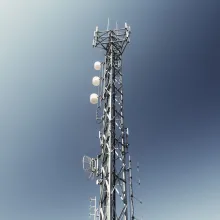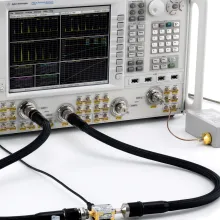The topics below each serve as a technical reference for the foundational principles and technologies essential for understanding wireless communication systems. You will find information pertaining to spectrum management, transmission techniques, security protocols, and the structural frameworks of networks. Each section breaks down the different schemes, techniques, protocols, and bands in a list format for easy reference.

Duplexing in RF communications is a technique used to facilitate two-way communication over a single channel, allowing both transmission and reception of signals. The key challenge in duplexing is to manage the bidirectional flow of information without interference between the transmitted and received signals. This is achieved by arranging organising how the channel is shared for sending and receiving data, ensuring efficient and reliable communication in various RF applications. Duplexing is ...

Modulation is a fundamental concept in RF communications, where it refers to the process of varying an electromagnetic wave's properties to transmit information. Called a carrier (or subcarrier), each individual frequency is modulated to encode data, allowing the signal to carry information over a distance. This modulation process involves altering the carrier signal's amplitude, frequency, and/or phase, to encode the desired data within the carrier.
Ship-to-ship communications made up some of ...

Multiple Access in RF communications refers to the techniques used to allow multiple users or devices to share the same frequency spectrum or channel simultaneously. It is essential in environments where numerous devices need to communicate without causing interference with each other. The core idea is to divide the available resources, whether they be time, frequency, code, or space, so that each user can transmit and receive data without collisions or degradation in performance.
Multiple access ...

In wireless networks, a device's topological role refers to the specific function or position it assumes within the network's structure, which determines how it interacts with other devices and participates in data transmission. This role is defined by the network's topology, which is essentially the arrangement or pattern of devices and how they are interconnected.
The topological role of a device influences several critical aspects of network operation, including data routing, connectivity, and ...

The IEEE bands, occasionally referred to as IEEE radar bands, are standardised categorizations of frequency ranges within the electromagnetic spectrum. These bands were created to streamline the discussion, development, and deployment of technologies, particularly in radar and satellite communications, among various other applications.
The concept of these frequency bands emerged to ensure clear communication and interoperability between different technologies and systems. By dividing the ...

Information relating to the major bands used in RF communications can be found below. Each band is defined by the country's spectrum regulator and while each regulator works to harmonise bands between countries through the work of the ITU, the specifics of each RF band still differ between countries.
Within each allocation a band plan is defined which sets out the conditions in which users can operate radiofrequency transmitters. These conditions include:
- Licencing and coordination requirements
- Cha ...

MIMO (Multiple-In, Multiple-Out) is a radio access technology that uses multiple transmitters and multiple receivers to communicate multiple streams of data over the same frequency band simultaneously.
The demand for mobile data continues to explode, with an incredible projected year-on-year growth of 46% (Statista, 2019). Mobile network operators are continually pressed to find new ways to get more data through the air. Cellular-band radio frequency spectrum is an incredibly finite resource and ...

The parameters and metrics used to quantify performance of radiofrequency hardware can be unfamiliar to those new to the industry. We've developed a series of articles to assist our clients in building a more fundamental understanding of the theory behind RF communications.
Each of the below articles correspond to a particular RF parameter that may be found on the technical specification or datasheet of an item.
Powertec have loosely aligned its datasheet reporting with the NGMN's BASTA reporting ...